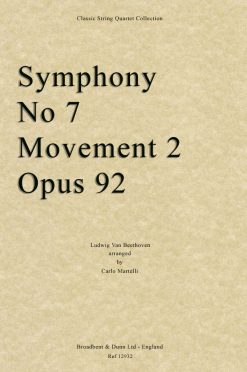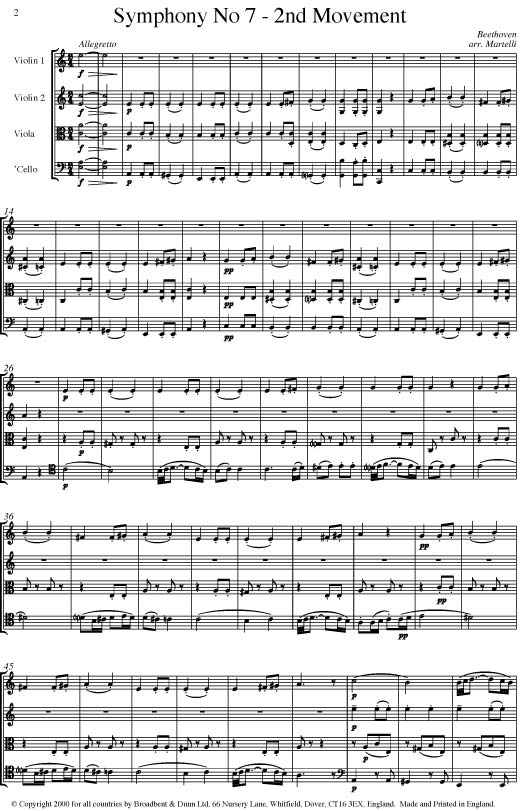

Beethoven, who was conducting, was energized, and Spohr reported in his Autobiography that “as a sforzando occurred, he tore his arms with great vehemence asunder… at the entrance of a forte he jumped into the air.” A consistent rhythmic drive was intoxicating and stimulating. The audience was pleased and demanded that the second movement be repeated. Celebrating this turn of events, the Seventh Symphony premiered at a concert in Vienna on December 8, 1813, to benefit troops wounded in the Battle of Hanau, a small but tactical victory on October 31, 1813, which routed Napoleon into a retreat in the War of the Sixth Coalition. Opus 92 was completed in 1812, the year in which Napoleon was beginning to fail in his conquests, and this status was undoubtedly pleasing to Beethoven. 7, IV.The Seventh Symphony is boisterous, intense, energetic and tuneful. During his tenure at Blossom, the Orchestra performed a wide range of music, from Monteverdi’s Blessed Virgin Vespers (1610) to Michael Daugherty’s Dead Elvis (2003). The Cleveland Orchestra, Christoph von DohnányiĪrchival Recording: Royal Albert Hall, London, SeptemLeonard Slatkin served as Blossom’s first Festival Director from 1991-1999. This recording is from the second of eleven appearances the Orchestra has made at the Proms since 1975. Christoph von Dohnányi, the Orchestra’s sixth music director (1984-2002), was a frequent conductor at the BBC Proms. 2 That the symphony moves both toward greater abandon while upping the rhythmic ante seems to offer an answer to the question posed by the first and second movements: If all movement must end, then one can and must still move - and live. Theorist Donald Tovey has analyzed how the opening seconds of the movement contain three different rhythmic patterns that Beethoven will develop.

The finale, in the words of Beethoven biographer Jan Swafford, “resembles a Scottish reel,” 1 but also contains incredibly elaborate rhythmic transformations. In the trio sections, Beethoven reveals the rhythm’s connection to that of the first movement, helping bridge the distance created by the tragic second. The third movement, a scherzo, is at turns bubbly and rustic, with a signature rhythm of long-short. Perhaps as an antidote to such a dark second movement, the remaining two movements return to the high spirits of the first. That the first movement introduces an idea and the second movement introduces complication is not unique to this symphony: Beethoven does it in the Fourth Symphony as well. Like dance, a funeral procession has a rhythm of its own, and in this movement, the inexorable progress of its long-short-short-long-long rhythmic pattern can reflect the unstoppable march of time. That he did is significant following on the heels of the joyous, dance-like first movement, this movement seems to reflect the opposite, with intimations of mortality. Beethoven’s opening the door of rhythm for a future composer might be akin to a painter discovering oil paint after only using watercolors: entirely new ways of representation become available.īeethoven did not have to give the second movement a tragic cast. Although such a use of rhythm was not unknown, no one previously had attempted anything akin to what Beethoven did in the Seventh. As you heard in the audio example, the first movement’s long-short-long rhythm acts as a sort of primeval soil from which musical themes spring. In the Seventh, Beethoven suffuses each movement with a unique and persistent rhythmic pattern, which he develops alongside melody and harmony through changes in duration, orchestration, and texture. Although derived partly from Wagner’s belief that symphonies arose from dance music, he hits upon a very important aspect of Beethoven's seventh, one that ties the work to the Promethean metaphor: rhythm.

This comment by Wagner, delivered as part of his historical rationale for his music dramas, has become inseparably connected to Beethoven’s Seventh Symphony.


 0 kommentar(er)
0 kommentar(er)
